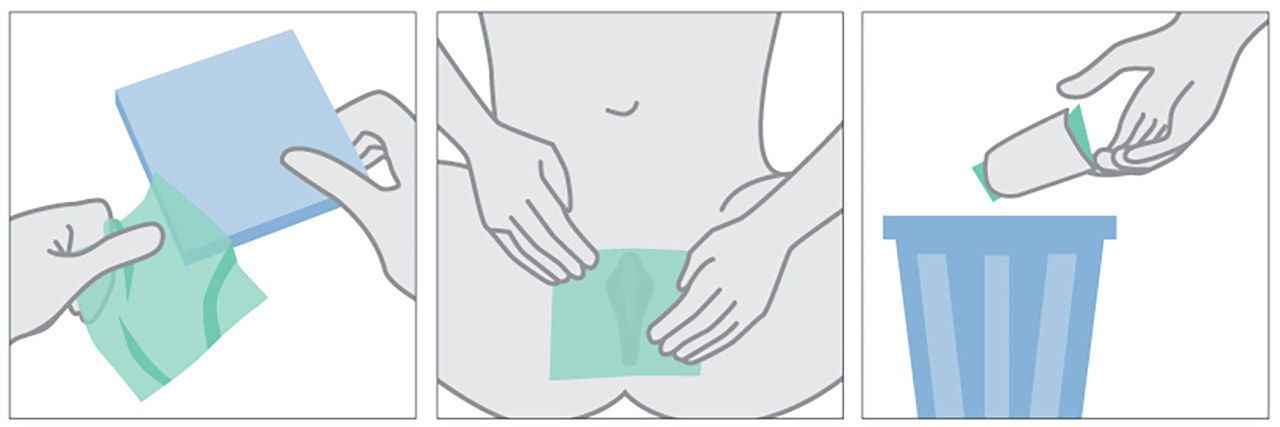Seriously, What Happened to the Dental Dam?

After the first time I received oral sex, a friend chastised me: “You should’ve used a dental dam!” A what? I thought. A few weeks later a sex educator on my college campus explained: A dental dam is a latex or polyurethane sheet created to block off teeth for dental surgery and repurposed to prevent STIs during oral sex. For the latter use, you put it between your mouth and a partner’s vulva and lick just as you would without one. Between this explanation and my friend’s self-assured comment, I assumed most people used dental dams and my first partner had just been reckless. But in subsequent hookups, guys would just go to town without mentioning any kind of protection. Since I was young and inexperienced, I didn’t question them. I figured any STIs that could be transmitted through oral must not be that bad or spreadable, or else people would be more careful. And since I felt lucky to be receiving any pleasure at all rather than just giving it, I didn’t want to be demanding.
In the decade since, I haven’t once met anyone who’s used a dental dam for oral sex—despite our knowledge that oral sex can transmit herpes, gonorrhea, syphilis, chlamydia, HIV, hepatitis, and genital warts. So what’s going on here? Does using dental dams suck so much that we’ve collectively decided that ditching them is worth the health risks? Or are we all just hesitant to bring them up because we’re scared of looking like dorks?
“When I talk about dental dams, it is usually the first time people have ever seen one,” says Kenna Cook, a sex educator at O.school. “We have almost never been shown barrier protection negotiations before oral sex in any media. I think men—and women—don’t want to look foolish or inexperienced. Shame about lack of sex education is real.”
The advice we get around STI prevention usually boils down to “Use condoms,” and drugstore shelves reflect that notion. The only place you might hope to find dental dams (outside a dentist’s office, anyway) is a sex shop specifically. Even then, they’re far rarer than condoms, says Alexis Thomas, owner of the Chicago sex shop Taboo Tabou. There just aren’t as many people looking for them.
“I think there’s a reputation among queer women and people with vaginas in general that no one uses dental dams. And that perpetuates itself, obviously,” says Sarah,* 27, who’s never used a dental dam herself. “I literally don’t think I’ve ever noticed them in pharmacies. I never thought—unlike condoms—that it was something people had on hand, and I didn’t [have them] either.”

There are multiple reasons for the disparate visibility between condoms and dental dams. First of all, when we talk about safe sex, we often focus on pregnancy prevention instead of STI prevention. In fact, many people are afraid to even bring up STIs at all due to the stigma around them. “Using a dental dam that only prevents disease comes with a subtext that the partner is diseased,” says Laurel Steinberg, Ph.D., a New York–based clinical sexologist and professor of psychology at Columbia University.
Secondly, even when we do discuss STI prevention, we often operate under the myth that oral sex somehow exempts us from transmitting them. Part of that is true: You are less likely to transmit STIs during oral, says Steinberg. But it’s definitely still possible, and despite this easy way to minimize the risk, many of us still aren’t taking precautions. When talk around safety during oral sex does happen, it’s almost always focused on oral sex performed on cis men. For evidence of this, just look at the wealth of flavored condoms on the market. Moreover, dental dams tend to be more expensive than condoms (around $1.75 each), but that may likely be due to a lack of sales, says Thomas.
The stigma around the dental dam can be traced beyond just STIs, down to the very root of our societal views of sex. “Most sexual education has to do with the male pleasure, and dental dams are the furthest thing from pleasuring men,” she says. “When we think about marketing for safe sex, it is almost always about condoms and the penis because our sexual education is rooted in the idea that sex is for reproduction and not pleasure.”

Gender politics aside, there’s also the issue of feeling. Some people feel that dental dams reduce sensation, don’t taste good, or put an emotional barrier between us and our partners, says Steinberg. One woman we spoke with (who chose to remain anonymous) describes using a dental dam as “extremely awkward in terms of functionality—it definitely limits what you can do.” Kenna Cook, the sex educator, says it doesn’t feel the same for the receiver either, though you can put lube on the inside and stretch the latex to help it feel more realistic. “You have to be more aware of what you’re doing, like making sure the dam stays in place,” she says. “And you miss out on other sensory stimulation, like taste.”
Curious whether the dental dam’s bad reputation was deserved, I walked from sex shop to sex shop searching for one, to no avail. Finally, I found a store dedicated solely to condoms, and inside a glass covering by the cashier, next to hundreds of condoms in every flavor from bubble gum to chocolate, lay three dental dam flavors. When I requested the strawberry one, the salesperson asked, “You realize that’s not a condom, right?” These products were so unpopular she clearly assumed someone buying them must be making a mistake.
When I took it home and showed it to my boyfriend, he had no idea what it was; he’d never even heard of dental dams. Once he got a sense of how it worked, he hated it with a passion. “I feel like I’m licking a glove,” he said, adding that it wasn’t “romantic.” It felt pretty underwhelming for me too—kind of like being fingered with your underwear still on.
Given that the only option we have for safely going down on women limits enjoyment so much, it’s surprising that there’s been no major headway to invent something better. Despite recent condom innovations, from ribbed pouches to interwoven hexagons, Thomas says she’s seen no major changes to dental dams since she founded Taboo Tabou in the eighties—once again, likely due to lack of demand.
If we want to increase that demand, we may have to abandon the idea that it’s somehow uncool to care about women’s sexual health. Without this toxic myth, my 18-year-old self might have felt proud instead of embarrassed to ask my partners to exercise caution when they went down on me. So get on it, sex innovators!
*Some names have been changed.
This article is part of Summer of Sex, our 12-week long exploration of how women are having sex in 2017.
More Summer of Sex:
—Does Mainstream Porn Have a Race Problem?
—What It Means to Be Demisexual
—Paying for Porn Is the Feminist Way to Get Off

